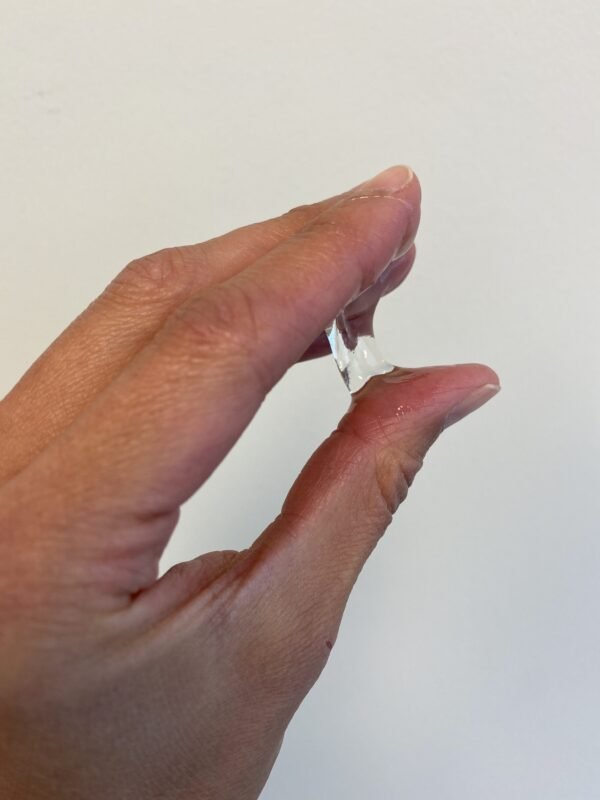Vaginal Moisturizers
What is the purpose of a vaginal moisturizer?
Vaginal moisturizers are often recommended for those who are experiencing the uncomfortable symptom of vaginal dryness. Vaginal dryness can be felt deep inside the vaginal walls as well as around the outer layer that surrounds the opening of the vagina (also called the vulva). Symptoms of vaginal dryness can feel like burning, irritation, soreness and/or itching inside and around the vaginal opening. Pain with penetrative intercourse is often a consequence of vaginal dryness because the increased friction during intercourse results in micro-tearing of the sensitive vaginal walls.
Vaginal moisturizers are long lasting (over the course of a few days) and are intended to maintain the vaginal pH level and rehydrate the mucosal lining to mimic natural vaginal secretions and help alleviate the sensations of dryness all throughout the day. Moisturizers are used every day to every 2-3 days and frequency of use is directly proportional to the intensity of symptoms. They are hormone free and may include hyaluronic acid which acts to coat the vaginal wall and draw in water into the epidermal layer. Some examples of vulvo-vaginal moisturizers include: FemmeSense Balm and Repagyn.
Why would someone be experiencing vaginal dryness?
Vaginal dryness can occur at all ages. Typically, perimenopause and menopause is a very common time period when estrogen levels drop and as a result, the vaginal walls become thinner, less pliable, and the natural lubrication of the mucous membranes decreases. Hormonal fluctuations during pregnancy, post partum and while breastfeeding can also cause vaginal dryness. Estrogen suppressing contraceptives like hormonal IUDs, depo-provera injections, antidepressants, cancer related surgeries and treatments all can play a role in depleting the moisture within the vaginal walls.
So what is the difference between a vaginal moisturizer and a lubricant?
A lubricant’s effect is intended to last over a much shorter time period compared to a moisturizer. Lubricants are a liquid or gel intended for use during sexual activity. Its use helps make the area around the vagina, vulva, or anal area wetter. This helps reduce friction thereby enhancing sexual sensation and pleasure. Lubricants can be composed of water, oil, or a silicone base.
Water based lubricants are the most versatile. They are affordable and easiest to wash off clothing and skin. They are safe to use with any toy that may be made of silicone, latex or non-latex condom, without the worry of it degrading the material. Water based lubricants tend to not be as long lasting as other lubricants and may need to be reapplied to maintain moisture.
Silicone is safe to use with condoms but is not intended for use with silicone sex toys. Silicone is much longer lasting (think shower play!) but takes a bit more effort to wash off.
Oil based lubricants can be natural (like coconut or olive oil) or synthetic like mineral oil. Oil lubes are long lasting but should not be used with latex condoms as they can increase the risk of breakage.
Why does pH and Osmolality Matter?
When choosing a lubricant or moisturizer, it is important to consider the pH and osmolality of the product. Products should maintain the pH level of the vagina and rectum which is 3.8-4.5 and 7.0, respectively. If a lubricant or moisturizer alters the pH level, this can lead to an increased risk of urinary tract infections or yeast.
The World Health Organization (WHO) recommends that lubricants ideally have an osmolality of less than 380 mOsm/kg to minimize any risk of epithelial damage. Damaging the lining of the vagina or rectum can lead to irritation and/or infection. Most commercial lubricants exceed this recommended value, therefore the WHO states that osmolality should never exceed 1200 mOsm/kg. Lubricants that are less than 316 mOsm/kg include Good Clean Love, Slippery Stuff, and Sliquid.
A helpful osmolality and pH comparison chart for a variety of commercially available lubricants and moisturizers is shown in figure 1 in the study link below:
https://www.ncbi.nlm.nih.gov/pmc/articles/PMC4819835/
Excipients in lubricants
Excipients are substances that preserve the lubricant or moisturizer stability, bioavailability and patient tolerance.
Parabens are included as a preservative in a variety of lubricants and moisturizers. They are weakly estrogenic and there is some debate on whether they may act as endocrine disruptors.
Glycols serve as humectants/emollients in lubricants. Vaginal application in mouse studies have shown an increased susceptibility to the herpes simplex virus 2 (HSV-2). Those who experience chronic vulvar pain conditions should avoid this ingredient as it tends to aggravate and irritate the already sensitive vaginal tissues. The presence of glycerine and/or chlorhexidine has been associated with increased risk of bacterial vaginosis and at low concentrations, glycerine/glycerol is thought to be a food source for Candida albicans.
Microbicidal ingredients, such as nonoxynol-9, carrageenan, cellulose sulfate, chlorhexidine gluconate, and sodium dodecyl sulfate, are spermicides and preservatives added to lubricants. These ingredients can irritate skin and leave mucous membranes more vulnerable to infections like bacterial vaginosis and yeast.
Moisturizers and lubricants are very effective treatment options for the symptom of vaginal dryness. You can discuss with your doctor and/or your pelvic health physiotherapist regarding what type of lubricant or moisturizer might be right for you.
References:
https://www.ncbi.nlm.nih.gov/pmc/articles/PMC4819835/
https://www.contemporaryobgyn.net/view/vulvodynia-faqs
https://www.nature.com/articles/s41598-020-63652-x
https://badvibes.org/whats-in-your-lube/the-science-of-lubricants/


